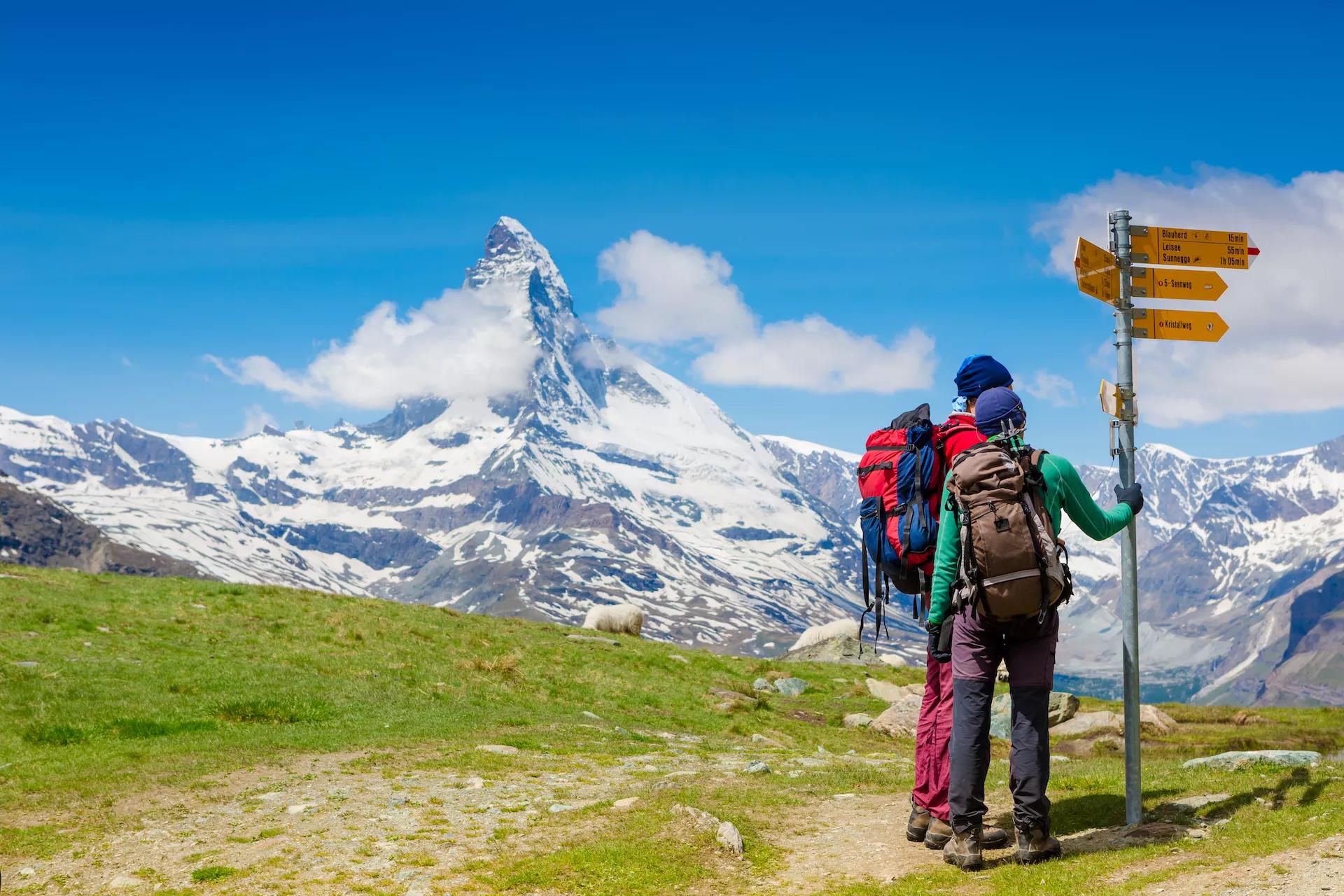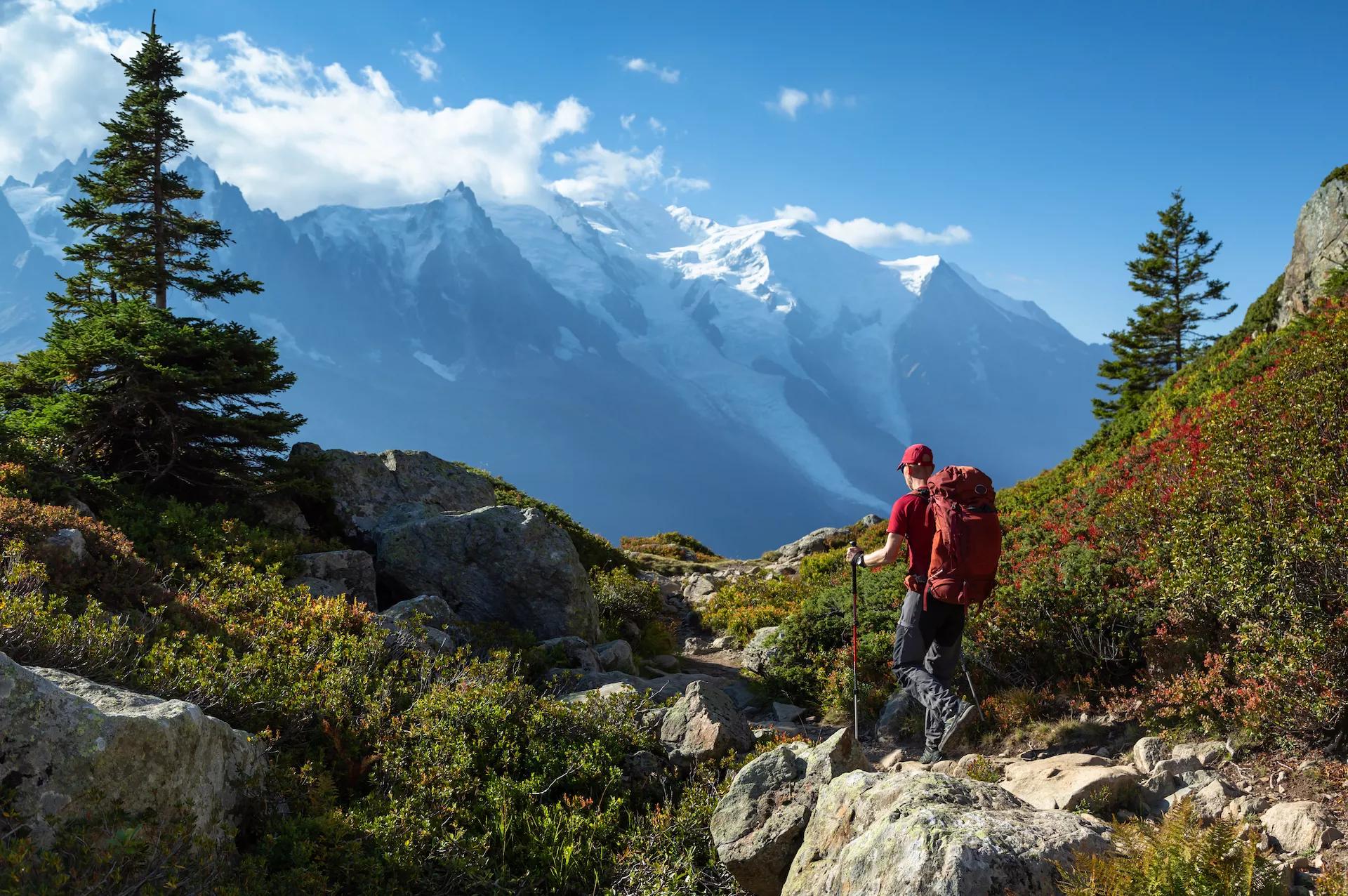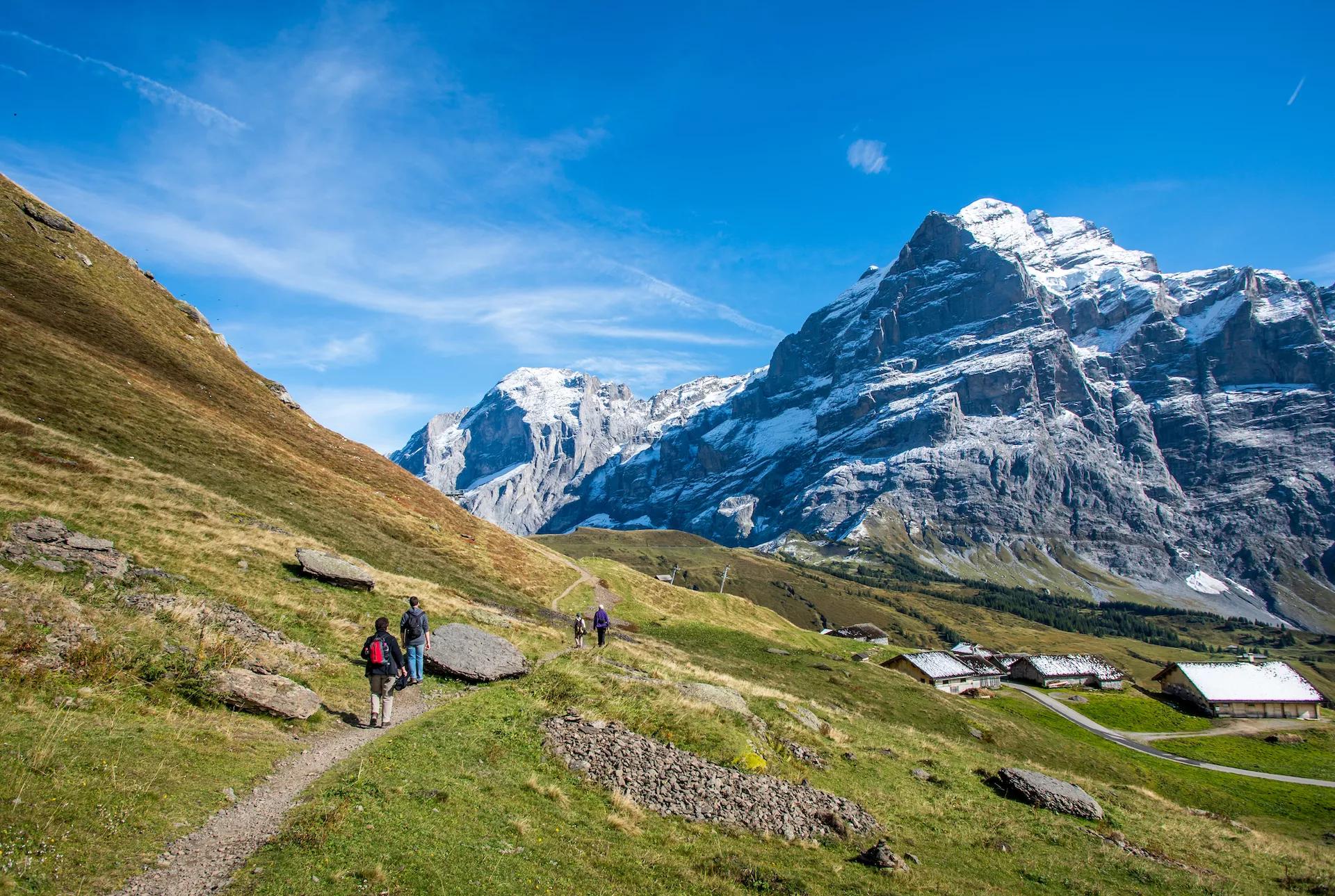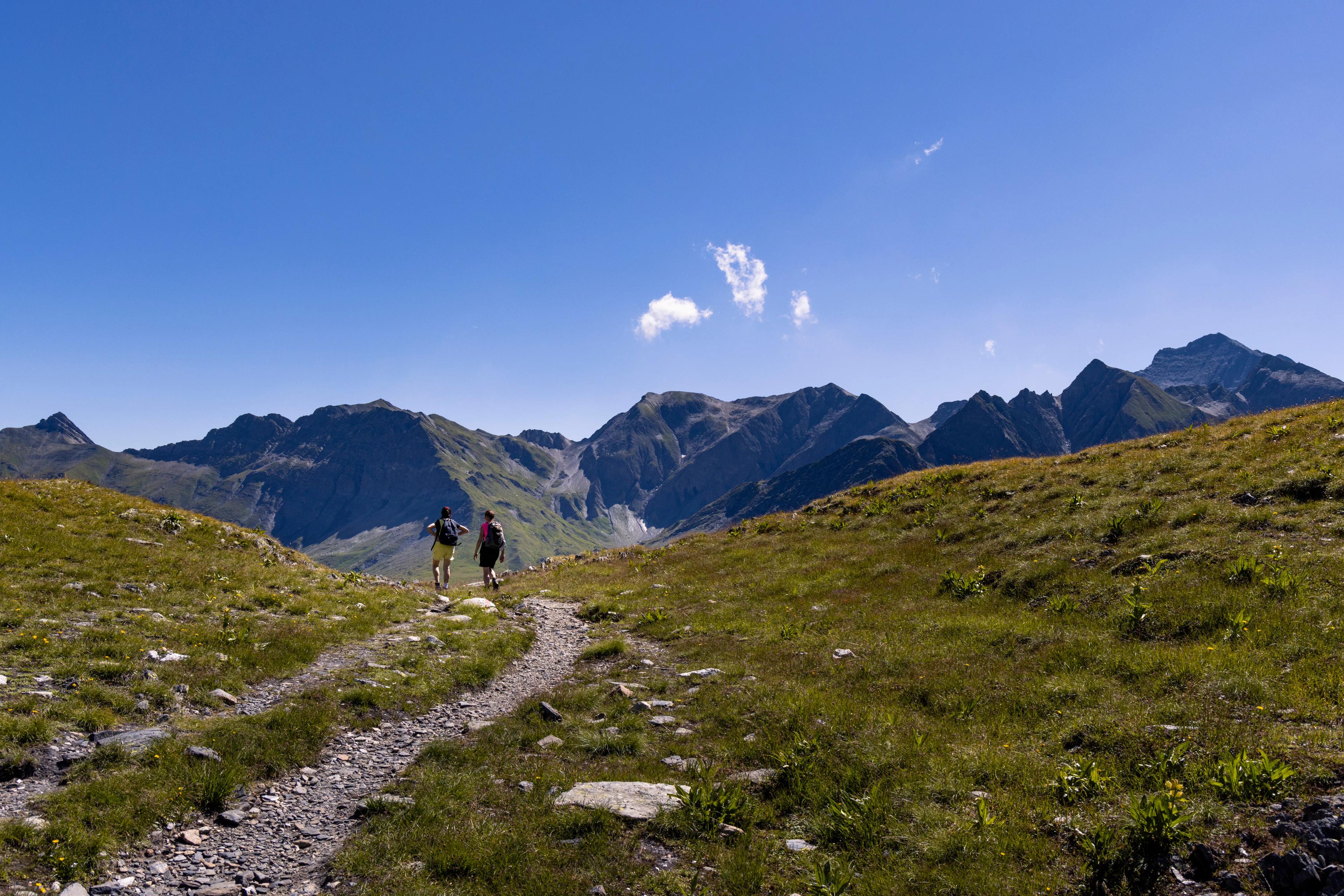Best Hut-to-Hut Hikes in Switzerland

Walker’s Haute Route Self Guided

Walker’s Haute Route – West

FREE E-BOOK
The Ultimate Guide to Hut to Hut Hiking in Switzerland
Enter your mail below and get your free E-Book!

Hut to Hut Hiking in Switzerland
Switzerland is a land of extraordinary alpine beauty. Besides luxury watches and chocolate, the Alps are definitely one of the first things that come to mind when anyone thinks of this small European country.
And there is no better way to experience the Switzerland Alps than through hut-to-hut hiking.
With its extensive network of trails (over 65,000 km!) and mountain huts on every scenic corner, hiking between them is when you really get to know the Alpine spirit of the country.
But this also has a downside — it’s hard to choose where to hike because of the countless options.
We did the work instead and selected the best hut-to-hut hikes in Switzerland that take you through some of its most epic mountain scenery.
Here’s how we help you:
- Detailed self-guided itinerary with all the necessary info for a successful hike
- A GPS route + simple-to-use app for easy navigation
- Booking all your accommodations
- Breakfast and dinner at the huts
- Full 24/7 support during your trip
We provide you with the above, so that the first step on the trail doesn’t feel like an intimidating leap into the unknown.
The first step in planning your hut-to-hut hike is simple — choose one of our listed Switzerland hiking tours, and send us an inquiry.
If you’re unsure which option is best for you, book a call, and we’ll help you find the right solution.
Short Guide to Hut-to-Hut Hiking in Switzerland

Each hut is unique, offering a different slice of Swiss mountain life. These huts range from simple dormitory-style accommodations to more private rooms, with the common thread being the warm hospitality and the chance to enjoy local Swiss dishes like raclette or rosti.
The evenings can be magical, as the setting sun casts alpine glows on the peaks, and the clear skies reveal a blanket of stars, often seen from the hut's outdoor spaces.

Booking your accommodations in advance is a must. The popularity of hut-to-hut hiking has grown, and spaces can fill up quickly. It's also worth considering the distance between huts when planning your daily hikes. While some may be just a few hours apart, others could require a full day's trek, so plan according to your comfort and fitness level.

Timing your hike is crucial. The high season for hiking is when the trails are rid of snow, typically from July to September. During this period, the days are the longest, the weather is generally warmer, and the huts are open and staffed.
However, it's also the busiest time, so solitude on the trails may be limited. For those seeking a quieter experience, the shoulder seasons of late June or early October can offer fewer crowds, though some huts may be closed, and snow may be present on higher trails, which warrants caution and good preparation.

The trails themselves are well-maintained and marked, but they do demand a level of respect for the mountain environment. Preparing for a hike in Switzerland means not only physical training but also understanding how to navigate the terrain.
It's advisable to familiarize yourself with the route beforehand, perhaps through online resources or guidebooks specific to the Swiss network of trails. The Swiss Alpine Club (SAC) manages many huts and offers detailed maps and guides, which can be invaluable for planning your hike.

When packing for your journey, consider the variable conditions you'll encounter. The Swiss Alps can be unpredictable, with sunny mornings quickly turning into stormy afternoons. A waterproof jacket, breathable layers, and sturdy hiking boots are essential.
It's also important to pack light, as you'll be carrying your belongings from hut to hut. Many hikers appreciate the simplicity of this style of travel, finding freedom in the minimalist approach.

Finally, hut-to-hut hiking in Switzerland is a chance to step away from the fast pace of modern life. It's an opportunity to slow down, to move at the rhythm of nature, and to appreciate the beauty of the mountains.
The trails offer moments of introspection and connection, whether it's a conversation with a fellow hiker or a quiet moment taking in the view of a valley below. It's an experience that challenges the body, enriches the mind, and nourishes the soul.
If you have a deep appreciation for nature, a desire to spend time in the tranquility of the mountains, and a willingness to embrace a simpler way of travel, then yes, this experience is tailored for you.
For more in-depth information about specific long-distance hikes in Switzerland, you can visit our extensive written guides for Walker's Haute Route and Via Alpina, respectively.
Switzerland: The Cradle of Mountain Tourism
Switzerland's heart and soul are intrinsically linked to the Alps, which cover 60% of the country's landscape and host an array of peaks, including the iconic Matterhorn. The country's commitment to conservation ensures that its pristine alpine ecosystems, home to Europe's significant glaciers and the birthplace of major rivers like the Rhône and the Rhine, are preserved for future generations.
Swiss mountains are laced with trails and dotted with huts, offering both the seasoned climber and the casual hiker a chance to experience the majesty of the Alps. The mountaineering spirit is complemented by state-of-the-art mountain railways and cable cars, providing access to breathtaking vistas and making the alpine experience accessible.

Hassle-Free
We handle itineraries, accommodations, and anything else you prefer not to deal with, so you can enjoy a carefree hike.

Book with confidence
We are a financially protected company, fully bonded and insured, keeping your money safe and allowing you to travel with confidence.

Tried & Tested Adventures
Only the best hut to hut hikes of Switzerland, cherry-picked by our local team with an in-depth knowledge of the region.

Unbeatable support
Our 24/7 customer support is where we show our passion, bringing you a better experience by making your well-being our number one priority.
Frequently Asked Questions
Ratings & Reviews

5.0 average rating

We had a lovely hike today with our guide Klemen. He personalized the tour on our needs and interests, so that we saw places we wouldn't without his experience. The hike was a little bit slippery after the rain from the last days and it went a lot upwards, but it was totally worth it! Thanks again :)


Daja Gorišek was the travel agent from here who meticulously organised the trek all the way from Meiringen to Lenk im Simmental. She took care of all the details -- from planning the actual trek route, the detailed GPS map for each stage, to the hotels. The actual experience was entirely consistent with what was promised.
























.jpg&w=3840&q=75)